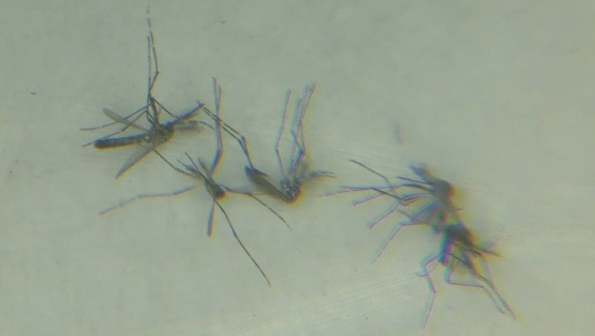
LOS ANGELES , United States (Reuters) — The outbreak of the Zika virus is expected to reach the continental United States in the coming weeks as temperatures rise and mosquito populations multiply.
In Los Angeles County, the Vector Control District is trying to limit the impact of the virus with local initiatives to eliminate the breeding sources of mosquitoes.
“Zika is a real threat for Los Angeles County and for residents in areas where the invasive Aedes is present. So what we’re doing right now, we’re really doing outreach to our residents, we’re doing control backyard to backyard to try and eliminate breeding sources, we’re educating residents with what to do to protect themselves. We’re really hoping that all residents can help us keep the number of cases that we will experience in the future low,” explained Susanne Kluh, the technical director for the Los Angeles County Vector Control District.
“We expect Zika will eventually arrive in LA County and that possibly our mosquitoes will pick it up from somebody who has been infected on one of their journeys,” added Kluh.
First detected in Brazil last year, Zika has been linked in that country to nearly 1,300 cases of microcephaly, a rare birth defect defined by unusually small heads.
The U.S. Centers for Disease Control and Prevention (CDC) said on Friday (May 20) that some 157 pregnant women in the United States and another 122 in U.S. territories, primarily Puerto Rico, have tested positive for infection with the Zika virus.
“So we haven’t found any Zika virus in Los Angeles locally transmitted to this point. We have a lot of traps out there that collect mosquitoes, we try to send these mosquitoes to (University of California) Davis for the presence of the disease. The health department is monitoring for folks that might have the disease and so between that and all of our control efforts we’re really trying to know as soon as possible if we would have a problem with Zika,” said Kluh.
In California, the Aedes aegypti mosquitoes, which carry the Zika virus, arrived as recently as 2013, and have been spreading throughout the state and the Greater Los Angeles County Vector District is setting traps to capture them so that they can be tested for the virus.
“The tools in the field are traps and these traps kind of attract the adult mosquitoes. There is a fan in the bottom and the mosquitoes get sucked into that fan-covered unit and then our technicians can come out and bring those mosquitoes in the nets back to the laboratory , we sample them together by city or by zip code and we send them off to Davis just to make sure that however many mosquitoes we can catch, they don’t contain any of the disease,” explained Kluh.
The Obama administration has asked Congress for nearly $1.9 billion to fight Zika, including $453 million to assist with emergency response, laboratory capacity and mosquito control. Lawmakers in the House of Representatives and Senate are considering their own funding proposals, which each fall far short of that sum.
To help plug some of the gaps until Congress acts, the CDC is adding $38 million to an existing infectious diseases grant program to expand lab testing capacity and surveillance for Zika.
The Zika virus can also be transmitted through unprotected sex with an infected person, health officials have said.
The World Health Organization has said there is also strong scientific consensus that Zika can also cause Guillain-Barre, a rare neurological syndrome that causes temporary paralysis in adults.







